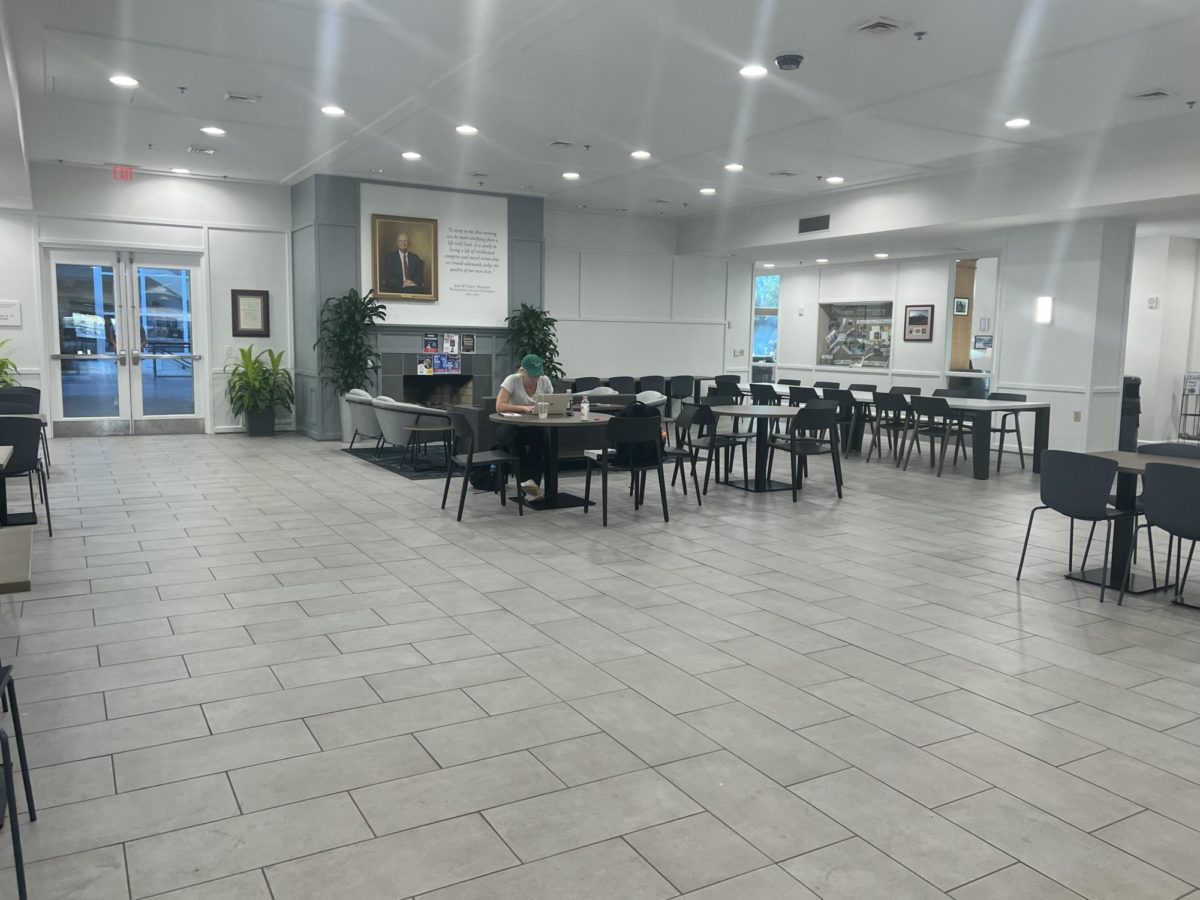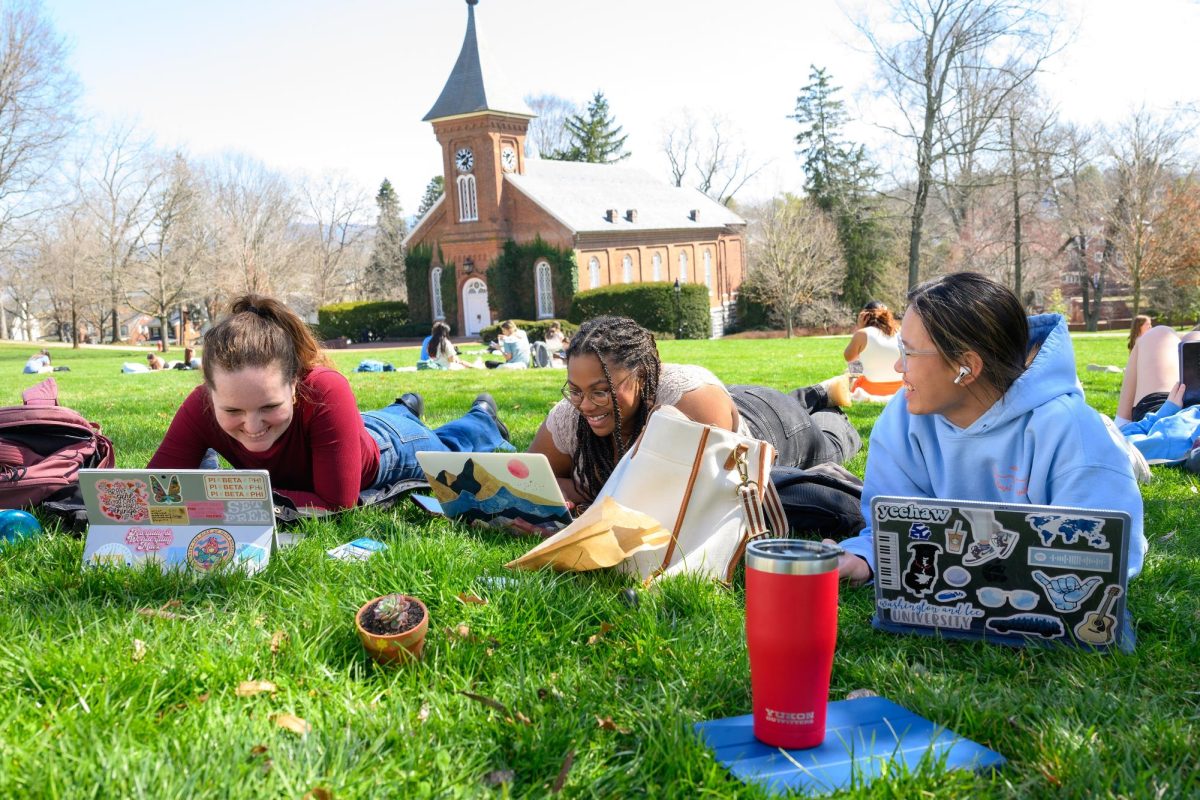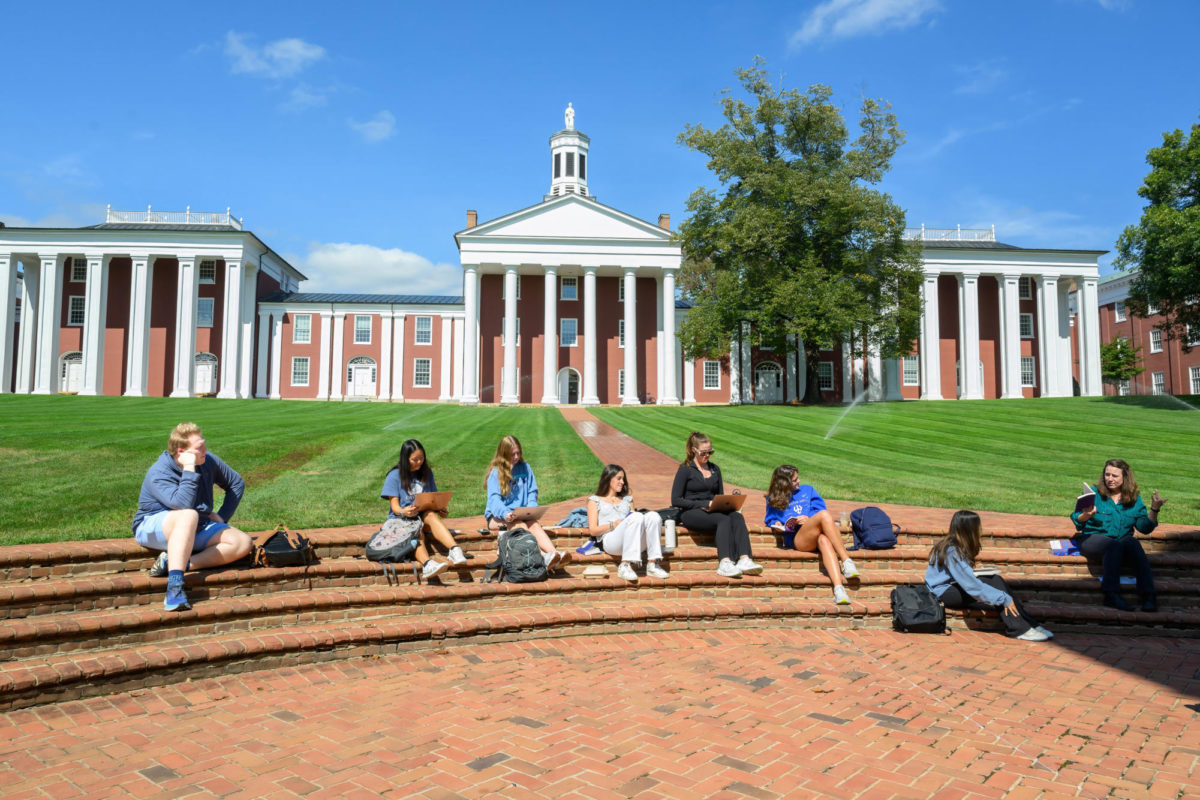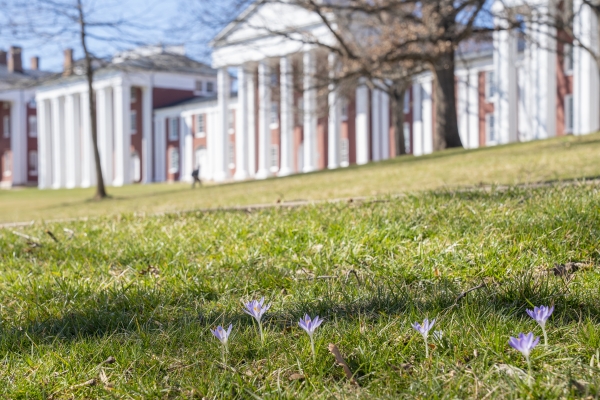As the summer season gives way to fall, these first words came to mind when I walked into the new Commons: sterile, blank, empty, cold, uncomfortable. I looked around — where was the ping-pong table? Where were the couches? The plants? The piano?! Something was wrong.
The new Commons is, strictly speaking, an abomination. The tan walls are now bright white. The homey couches, worn nicely by years of student use, are now rigid, ugly plastic chairs. The warm yellow lighting has been traded for oppressive LED white lights. No carpets, no art, no plants, no ping-pong, no piano. In fact, the only things left over from the old Commons are the gas fireplace that doesn’t work and the portrait of ole John W. Elrod, who I’m certain would be ashamed to know he is presiding over such a tasteless wasteland of putrid modern design work.
Because that is exactly what the new Commons is—an emblematic work of the modern design ethos: white, blank space, minimalism, unwelcoming interiors, generic furniture. It is an ethos based on efficiency, having the effect of standardizing and bastardizing everything it touches. What makes the new Commons unique to Washington and Lee, a place where the spirit of the students should be portrayed? Absolutely nothing. It is just another modern dining area, unremarkable and indistinguishable.
This, of course, is the same thing that has happened to homes nationwide. Take a look outside your city at the new suburban development and you will see cookie-cutter homes, small manicured lawns (without trees or plants), and rows upon rows of the same houses. The interiors of these homes resemble the new Commons with vacuous spaces, white walls and lighting, and kitchens that look like spaceships. The developers of these homes (called tract housing) care nothing about the people they are building them for. They don’t have to—the homes are all identical, erected cheaply and quickly, and hoping to lure in buyers for their inexpensive price.
An article in Current Affairs on contemporary architecture gets it right: “At the moment, the needs or wishes of the people who actually have to use buildings are rarely considered at all… Students do not get to say what kind of school they would like, office workers do not get to say whether they would prefer to work in a glass tower or in a leafy complex of wifi-enabled wooden pagodas… Architecture becomes something imposed upon people… It’s prefabricated, assembled beforehand off-site and then dumped on the unwitting populace.”
Students, in this case, certainly did not get to say what kind of school we would like, or more simply what kind of Commons we would like. How many of the students, like me, used to stop to hear a peer playing Chopin or Mozart late one evening? How many played an impromptu game of ping-pong as a study break? How many would sit crowded around the low tables and on the carpets, talking and eating with friends? How many thought it felt like a home, a good home?
Now, the only redeeming quality about Commons is that you can still find good people in it. My friends and peers continue to eat there and do work, and that is enough to make it an enjoyable place. But that is despite a design that makes it as unwelcoming as possible.
In short, I’m dismayed. A school as small as Washington and Lee, with a Commons as important, should take into account what their students want. Instead of building a space as quickly and cheaply as possible, without regard to what they were removing and destroying in the process, the administration should have asked what Commons is supposed to stand for. An unappealing and generic modern design ethos, or a warm and unique space, laden with rugs, couches, a piano and a ping-pong table.
I chose to go to Washington and Lee because I thought it was a special place. I still think it is. But when the school gets rid of the unique spaces that make up the unique place, it hurts this identity.
I remember on my tour of the school the tour guide telling me that he felt like everyone at the school must play the piano because he always hears it being used in Commons. That stuck with me.
But the old Commons is gone. And that won’t change. My hope, however, is that the school will consider what they build a little more thoughtfully. If you are going to change the spirit of a place, at least remember the people that inhabit it. I don’t think that’s a very big ask.










Robert Owen ‘88 • Sep 27, 2023 at 6:41 pm
Back up until 1987 we used to have a student lounge over in the student center next to the EC offices and it was chock-full of books that have been donated by students over the years and it was a great little personal space to go and sit and read and relax. And then, in the infinite wisdom of the University, it was decided to get rid of that and replace it with offices for the useless school psychologist Dr. worth, and the books were all thrown in the trash.
so William I understand exactly what you’re talking about
Hawkins • Sep 26, 2023 at 1:50 pm
Insightful as always, Will.
Benton • Sep 27, 2023 at 11:47 am
Hawkins, I personally could do without your additional commentary. William, this is super insightful.